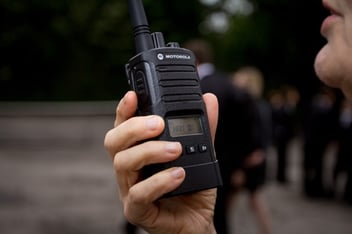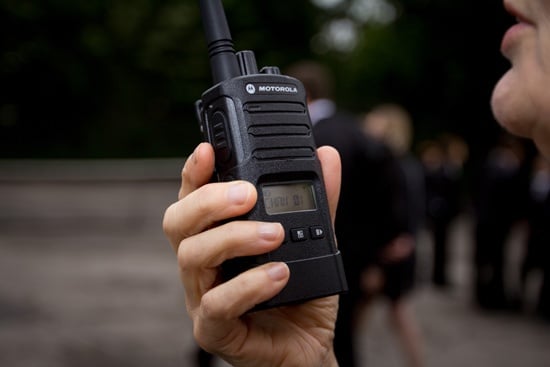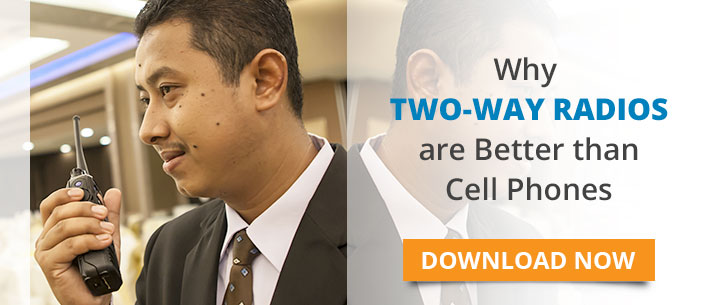 If you’re in the market for a new two-way radio solution, you may be feeling overwhelmed by all of the options: Analog vs. digital? Trunked radio system vs. Conventional? Repeater vs. Distributed Antenna System?
If you’re in the market for a new two-way radio solution, you may be feeling overwhelmed by all of the options: Analog vs. digital? Trunked radio system vs. Conventional? Repeater vs. Distributed Antenna System?
Working with trusted two-way radio service providers is ultimately the best way to determine which solution will best meet your needs, and it’s a good idea to go into your conversations with providers with some homework already done.
For now, let’s start with just one of your many options by helping to answer: What’s the difference between a conventional and trunked radio system?
Conventional Systems
The conventional radio system is typically the simpler of the two. A conventional system has dedicated channels for specific groups and users, and the user manually selects the channels they want. For example, channel 1 may be dedicated to field officers, while channel 2 may be for sergeants, and the user is responsible for selecting the correct one.
As no control channels are needed, users are free to use any of the channels available to them, assuming no one else is currently using the channel. If another person is on the channel, the user has to wait until they're done, which can lead to transmission traffic jams.
Given the nature of the system, the number of users who can successfully use it is directly related to the number of channels available. Conventional systems are typically best suited for businesses, organizations, or public safety agencies with a smaller number of users. In general, these systems can support roughly 70 users per channel.
Trunked Systems
If you hear the term trunked radio system and immediately picture a giant radio network stored in a car trunk – get the image out of your mind.
The word “trunking” traces its origins back to the old landline telephone system days when it was used to describe a large number of users sharing a smaller number of communications paths, or “trunks.”
For a trunked system, those communication paths, or trunks, are channels. A trunked radio system is a computer-controlled network that automatically connects users to available radio channels when they need them. When a user, say an officer or sergeant in the field, wants to send a message, the system assigns them to an available channel, decreasing the likelihood that they’ll have to wait for a free channel to start transmitting.
Trunked radio relies on “repeaters” to re-transmit radio signals to expand the coverage of the devices. With signals going further, devices can transmit information across greater distances.
The Intersection Example
A great way to illustrate the differences between these networks is to consider two traffic intersections.
The first intersection is "conventional" and uses your average stoplight system. When a driver (user) comes to the intersection and the light is green (open channel), they are free to proceed. If the light is red (channel in use), they have to wait until the light turns green to move forward.
The second intersection, the "trunked" system, is a roundabout. When a driver enters this intersection, they simply merge in during the first possible opening in traffic, thus making their trip more efficient.
Advantages of A Trunked Radio System
Trunked systems are the ideal option for larger organizations that need expansive coverage as well as flexibility, convenience, and privacy throughout different talk-groups.
Advantages include:
Coverage: Since the system incorporates repeater technology, groups using frequencies can contact each other over greater distances. The re-transmitting of signals helps reception just as much as it helps with reach. With reinforced frequencies, radios using a trunked system will also experience stronger reception, even in areas where cell phones would not work.
Flexibility: The system can easily be changed to accommodate the needs of multiple departments without having to merge separate groups.
Convenience: The computer’s planning and assigning of frequencies makes channels available whenever groups are ready. At any given time, a group will be automatically directed to whatever frequency is currently open, allowing talk-groups to use the signals when they need them.
In conventional systems, users may waste time listening for idle time on the channel they’ve manually selected while other channels are available. Trunking reduces wasted time by finding an available channel and making the selection for them.
Privacy: Assigning groups to specific frequencies allows for more private conversation without the fear of another talk-group overhearing or interfering with an existing conversation.
The Choice is Yours
When it comes time to decide on whether a conventional or trunked system is best for you, keep in mind the size and scope of your team now and into the future.
Two-way radios provide users with a reliable means of communication, and with a trunked system to complement them, your radio system will experience increased productivity, helping your company experience a return on its investment.



